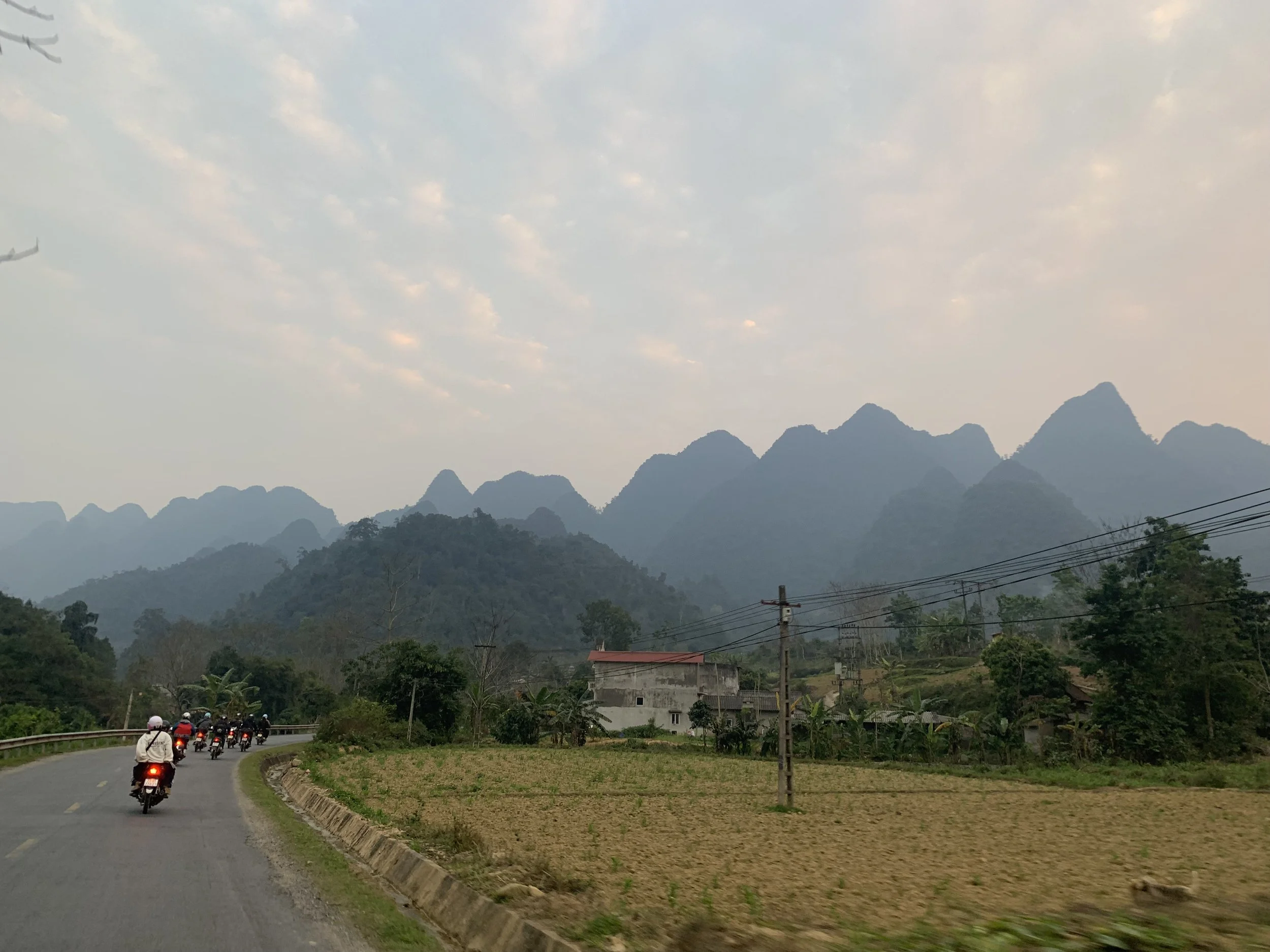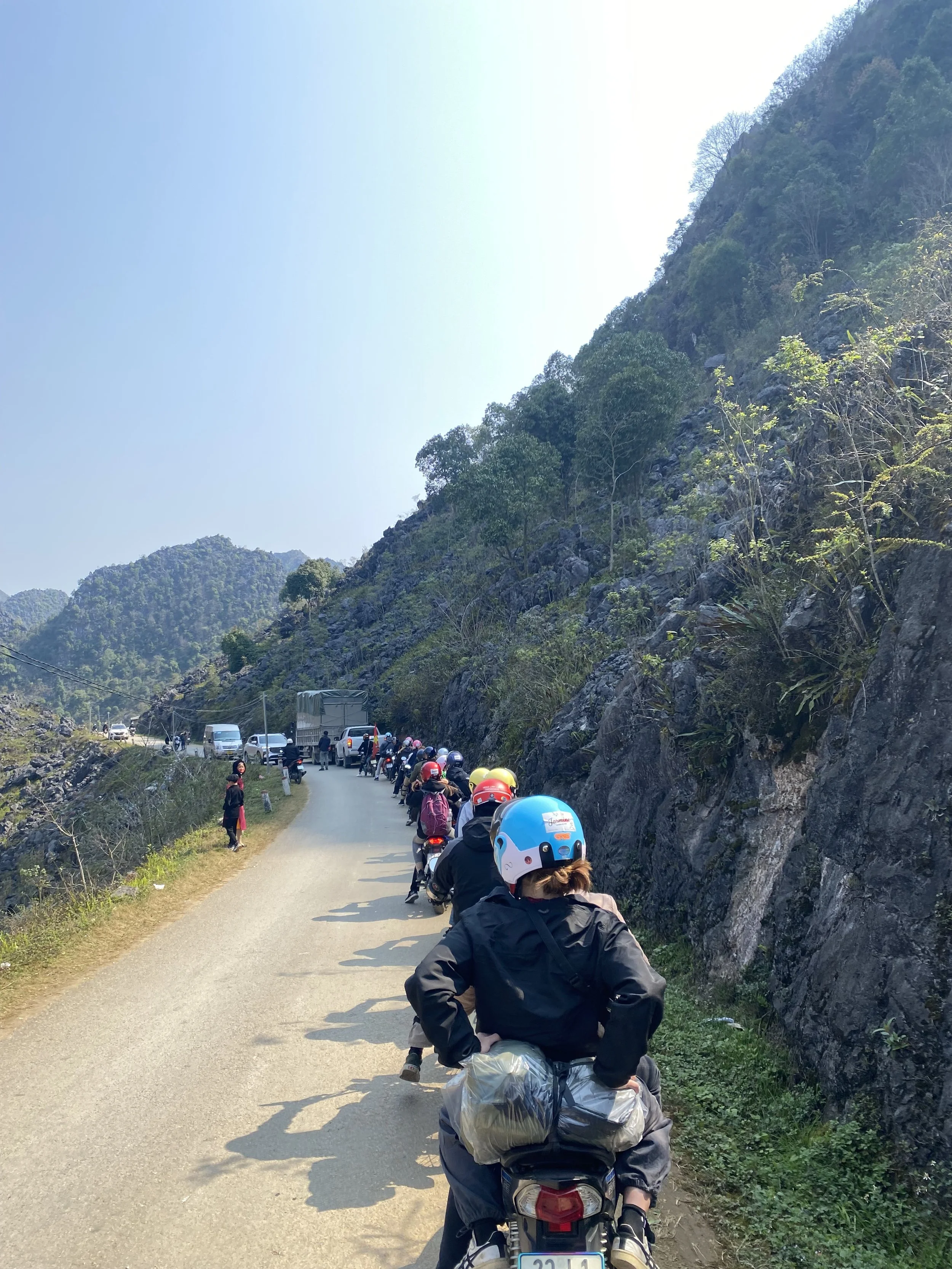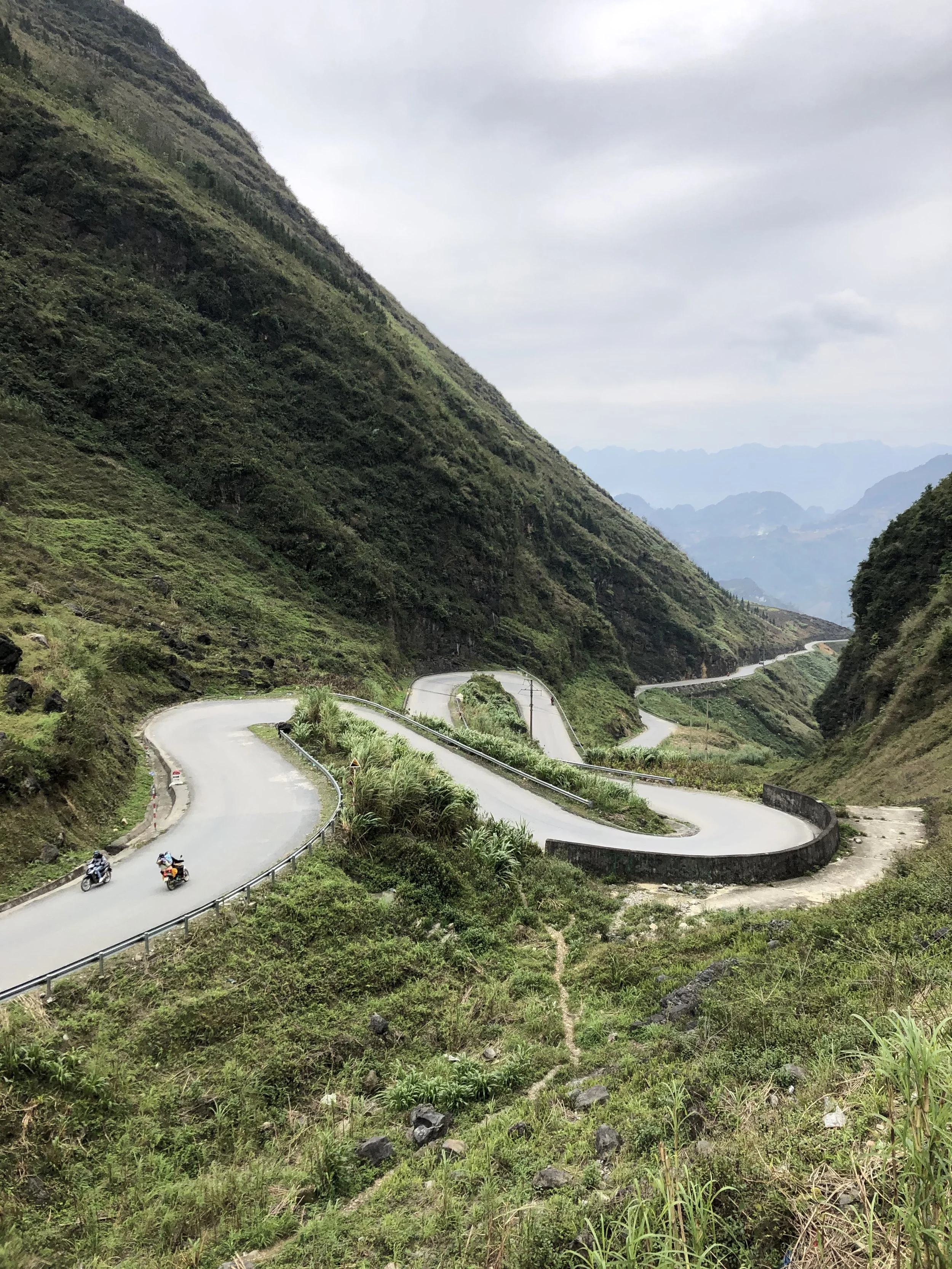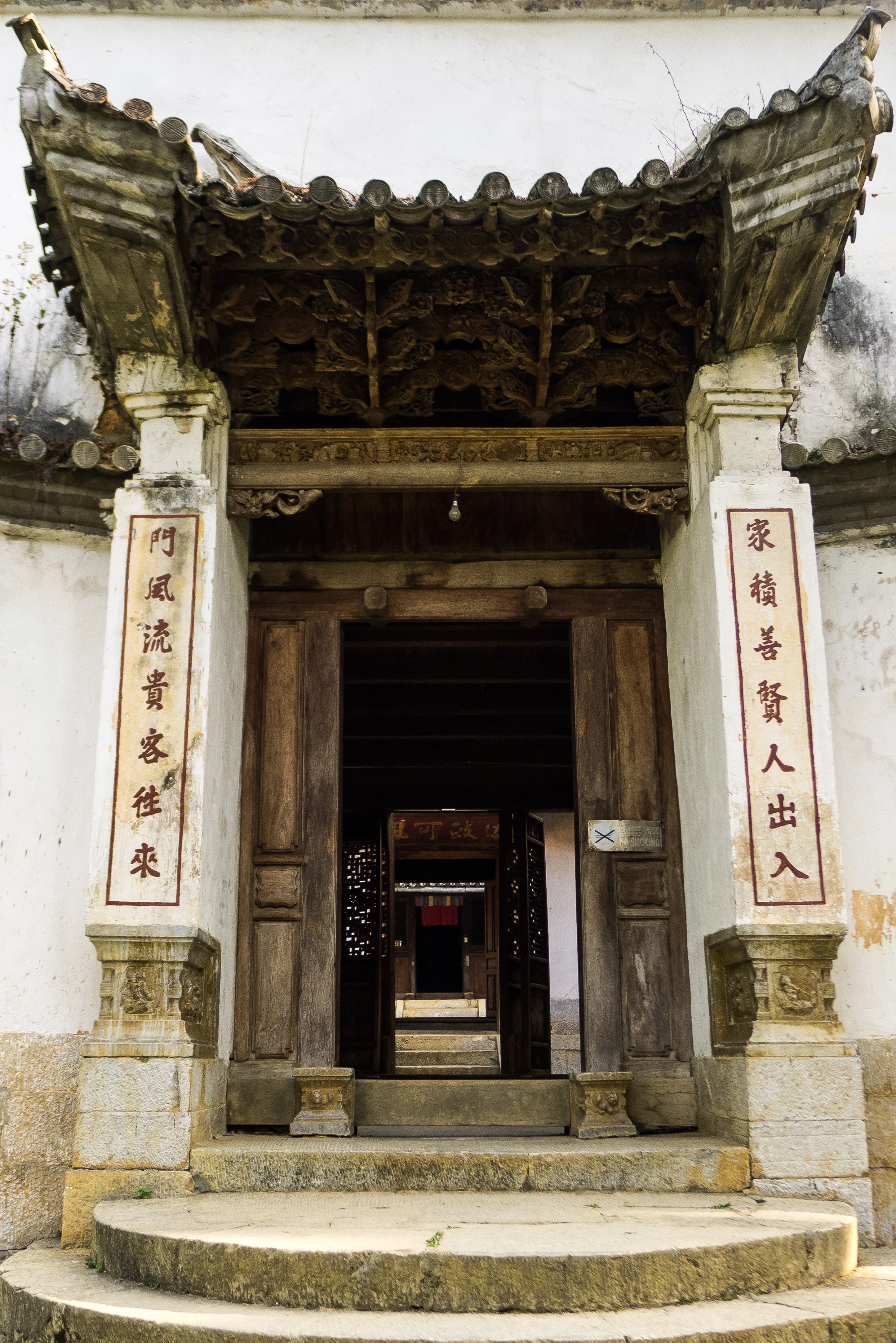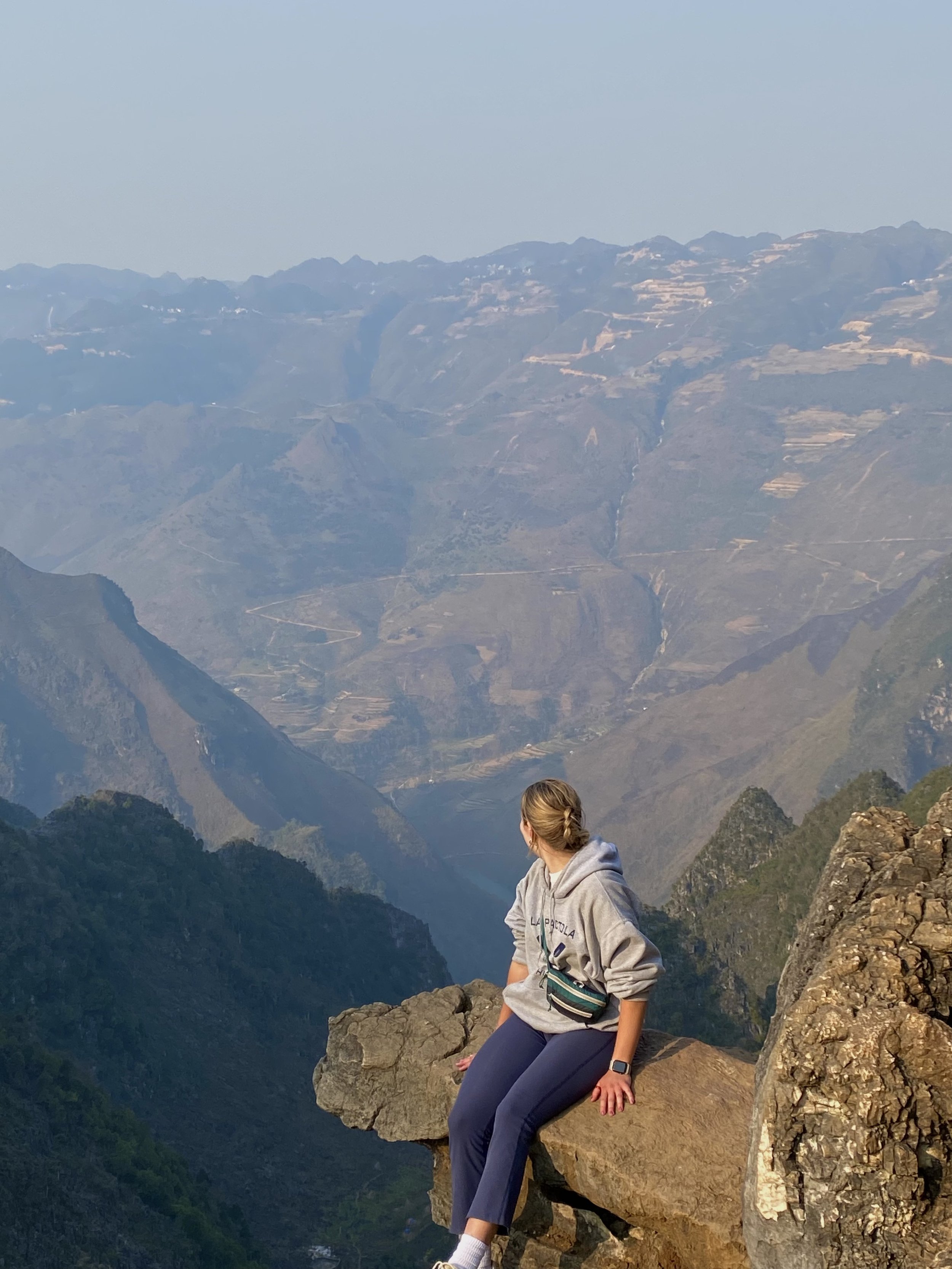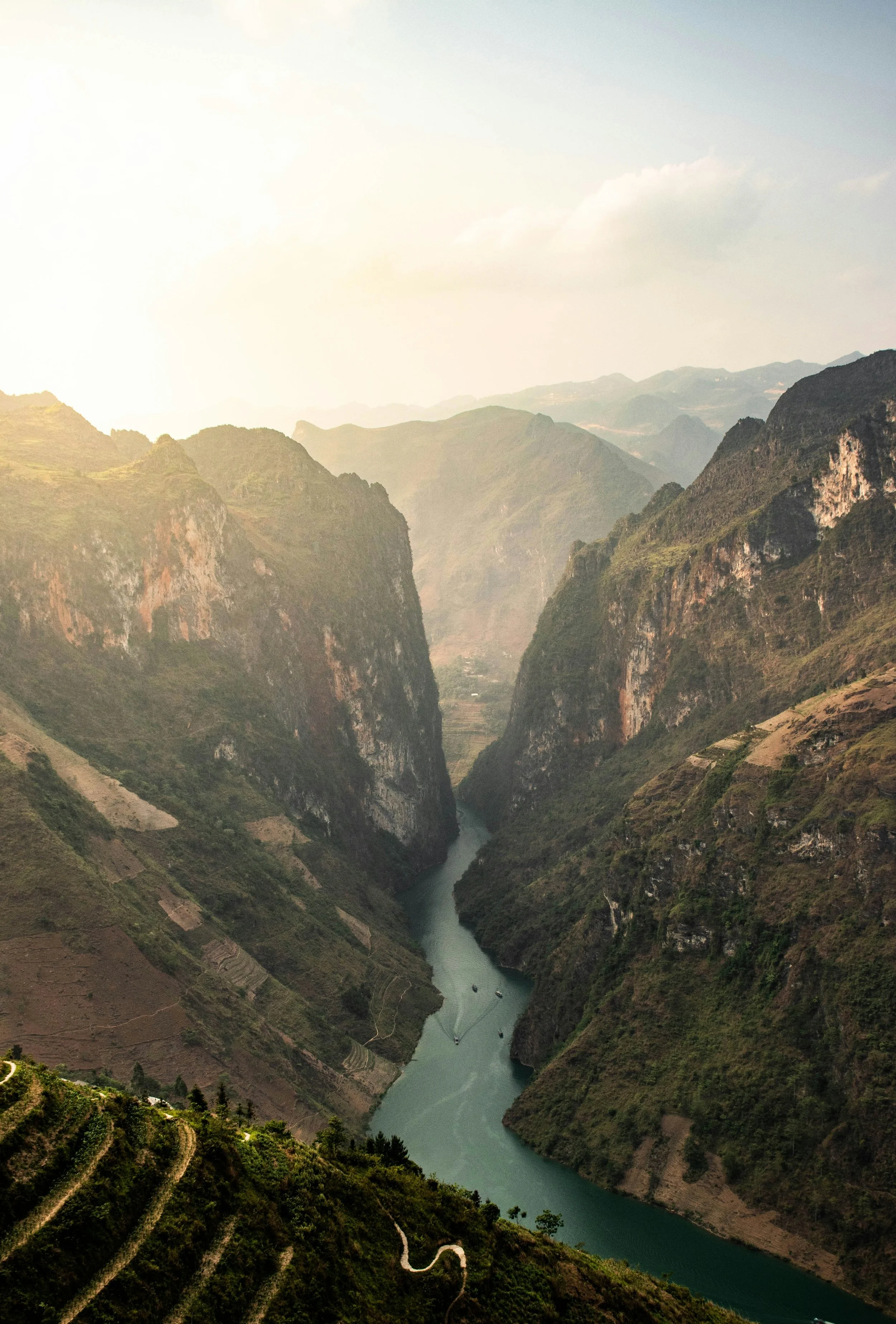The Ha Giang Loop offers travelers a unique way to experience the natural beauty of Vietnam.
Mountain View on the Ha Giang Loop, Harper Noteboom.
Nestled against the southern Chinese border, the Ha Giang province serves as the great final frontier of Vietnam. The region is characterized by its striking limestone peaks, steep drop-off valleys and quaint roadside villages. Despite its natural beauty, its remoteness, at approximately 300 km outside of Hanoi, makes it less frequented among tourists. When I first embarked on my five-month solo trip through Southeast Asia, I had never heard of Ha Giang or the experiences it offered. But within a few weeks, I began to hear conversations about the region and the once-in-a-lifetime opportunity to be a passenger on or, for the braver travelers, to drive a motorbike for three days through lush valleys full of hairpin turns. Despite these conversations, nothing could have prepared me for the life-changing experience of the Ha Giang Loop.
In the pre-dawn hours, our overcrowded semi-sleeper bus from Hanoi pulled into the city of Ha Giang. By 10 AM the street outside Jasmine Hostel was full of eager backpackers and their motorbikes. Being an inexperienced driver I opted to hire an easier ride, a Ha Giang local who would drive while I sat on the back. I would quickly be reassured that this was the right choice when I saw the injuries that a crash can inflict. We were sectioned off into groups of 15 and hit the road.
Traffic jam on the Bac Sum Pass. Harper Noteboom
We spent the first few hours of our drive traveling north out of the city of Ha Giang and over the Bac Sum pass. The first of many steep and narrow passes, Bac Sum is a 4.3 mile stretch of sharp zigzag turns at an altitude of 1475 feet. I was immediately encapsulated by the stunning mountain peaks that rose around me and began to understand its common nickname “Heaven Gate;” I truly felt like I was transcending the Earth and moving up into the Heavens.
Throughout the day we made several stops to enjoy the view, take a necessary break from sitting, and eat some lunch. As we pulled away from one of our stops, I suddenly felt the bike start to slow down and emit a horrible creaking sound. We came to a complete stop and I watched as the rest of the group sped past leaving my driver and me in their dust. Suddenly I found myself completely alone on the side of a mountain with a driver who spoke no English and had no way to contact my friends. Through lots of pointing, I was instructed to sit down next to the bike and wait while my driver walked off to call someone. As I was sitting wondering how far ahead my friends were, two little girls appeared from their small roadside village and began to show me the flowers they had picked. Without any verbal communication we were able to appreciate the beauty of their flowers together. These girls belong to one of the many ethnic minority groups in the Ha Giang region. The loop not only serves as a beautiful journey for adventurous travelers but also as a lifeline between small, isolated minority communities and the modern world. In this small interaction, I was reminded of the true reason I was traveling, to experience and connect with people and cultures that were different from my own.
Roadside Village. Harper Noteboom
Eventually, the leader of my group returned and put me on the back of his bike, he turned to me and said “Hold on tight we need to catch up”. And just like that, I was on my way to our homestay for the night. We closed out our first day with a delicious meal of authentic H’mong cuisine and shots of rice wine, accompanied by a chant-like toast from the group leaders.
Pass along the Dong Van Plateau. Sabourock. CC BY-SA 4.0
We started day two with a visit to Kings' Royal Palace, the home of the traditional leader of the Hmong ethnic group. The 19th-century mansion, built fully by hand, combines Hmong, Chinese and French architecture and serves as both a majestic home and a protected army base. The palace's harmonic design and original furnishings transport the visitor back in time and give a real glance into the life of the Hmong King. After indulging in a traditional Vietnamese coffee, we took a brief drive to Lung Cu Flag Tower. At over 35 meters tall, the octagon-shaped tower sits at the northernmost point of Vietnam and represents unity and independence for the country, offering a panoramic view across the Chinese border. After our morning of traveling back in time, we departed for what would be one of the most terrifying, gut-wrenching and inspiring experiences of my life, the Skywalk.
Entrance to Kings' Royal Palace. Gavin White. CC BY-NC-ND 2.0
Describing exactly what the Skywalk is and what it truly feels like to be there is no easy task. The beginning of the trail is extremely narrow and hugs the side of a mountain while snaking along its exterior. The short walk itself is nothing compared to the destination. A massive mound of rocks stretches out over the edge of a cliff and seems so perfectly balanced that a single shift would result in the complete crumbling of the cliff and all the people on it. From the side, one long, narrow, flat rock extends out from the rest. While barely big enough for two people and high enough that a misstep would result in a deadly drop, there was a long line of eager backpackers waiting for their turn to cautiously creep out onto the rock. When it was my turn to go, I was overwhelmed with fear and even glancing down sent my stomach into my chest, but I carefully and slowly crept to the edge and sat down. As I looked out at the 360-degree view of the sharp peaks and luscious fields below me, I felt like I was truly the queen of the world. In this moment I had a realization, this is what traveling is all about, this is what life is all about; it’s about facing your fears to fully take in the beautiful world that we are so blessed to explore. The memory of this moment is one I return to often, and I revel in the euphoria of travel and the beauty of experience.
Skywalk. Harper Noteboom
I rode the high of that moment for the rest of our drive to the quaint village where we would stay for the night. The following morning, as a final send-off, we took a cruise down the limestone-crested Tu San Canyon before our long, bumpy, and admittedly very dusty journey back to the city before catching our even longer bus back to Hanoi.
Tu San Canyon. Ryan Le. CC0
As I reflect on these 3 marvelous days, there's no way to describe the life-altering effect that the Ha Giang loop has had on me. I never thought I would have the chance to soar through epic mountain ranges on the back of a motorbike with some of my best friends, but I’m overjoyed that I did and I urge everyone who is visiting Vietnam to experience the Ha Giang Loop.
Harper Noteboom
Harper is a student at Pomona College majoring in Computer Science while exploring many interests in the liberal arts nature. Her worldly curiosity and passion for traveling took her to The Netherlands for High School and then on a gap year around Southeast Asia. Harper hopes to share the immense joy of traveling through her writing.

